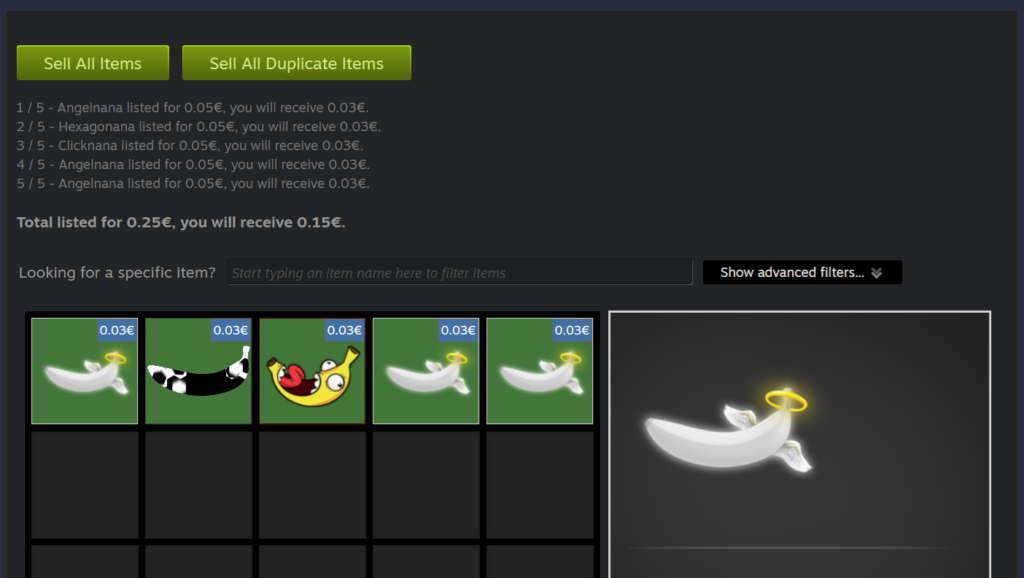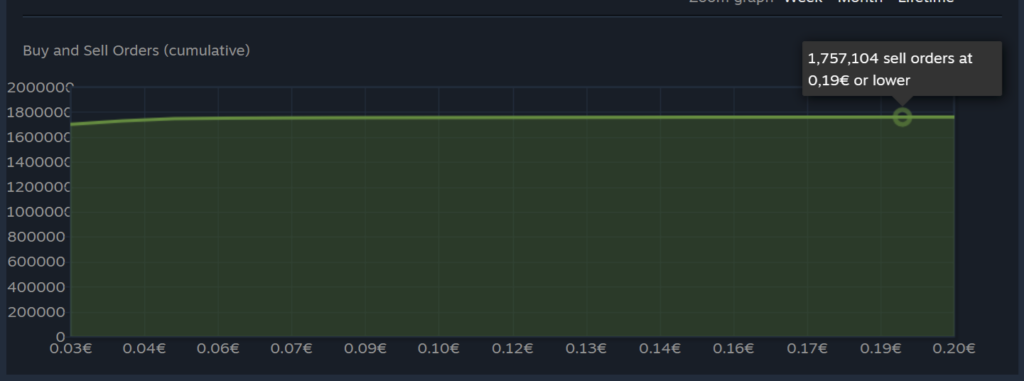There’s a weird game that’s managed to become Steam’s most played. At the time of writing it still sits at number 4. This game feels like a scam, like something that preys on people who want money. And yet, I can’t figure out anything wrong with it despite it’s lack of gameplay.
Banana is a clicker game. But it’s not like any other clicker game. In other clicker games you usually get upgrades to speed up progress, methods to progress when idling, prestige to reset in return for even faster progress, and a slew of other things. Not so with Banana.

You click the banana. Number goes up. That’s it.
So how did it reach the #1 most played game on Steam? Well, it’s found a strange loophole in Steam’s system, an infinite money glitch. Sort of. Because that money still comes from somewhere…
Many people have called this game shovelware, suggested it is a scam, or even that it has a built-in bitcoin miner. Shovelware is definitely accurate, there have already been a few copycat games featuring eggs, cats, or some other random item instead of bananas.
So what actually is this game? Well, as I have said already, it’s a clicker. You run the game, click the banana, and a number on the screen goes up. In their last update the number saves between plays instead of resetting to zero every time you restart the game. It’s a “game” in its most basic of forms.
The key is that the game drops items. Every three hours you get an item drop. Every 18 hours you get a chance of a rare item drop. These items can be sold on the Steam marketplace to other players. This is a play-to-earn game without the hassle of crypto, web3, or NFTs. Play the game, get drops, sell items for Steam credit.

Of course, most items are virtually worthless, selling for around $0.03. There are some rare items that sell for more. Some people will buy these items in the hopes of selling them to a bigger fool later on. Or maybe they just love collecting things that much. I’m honestly not sure why people buy these things.
I’ve run the game for around 24 hours so far, both with and without an autoclicker. In that time I’ve made less than 50 cents. If I wasn’t staying in hotels right now, that wouldn’t pay for the electricity I used mining these banana items.
But why does this game exist? What possible benefit does anyone get out of this game? Why does this feel like a scam yet shows no real evidence of it being a scam? To answer these questions we need to follow the money.
As has been mentioned, the workshop items dropped by the game can be bought/sold on the Steam Marketplace. When you sell an item, you don’t get all of the money. The developer gets a cut. If we look at just one item, the Moonana, we can see that over 1.5 million of these items have been sold. Even if the developers are only getting 1 cent per item, that’s $15,000 earned on just one item.

For the developers, this game is basically free money, that preys on people prone to the bigger fool scam. But why doesn’t Steam remove the game? Without a statement from Steam there’s no way to know for sure, but it should be noted that Steam does also get a cut from every sale made.
So is this a scam? Well, no. Not really. Everyone can plainly see what’s going on. It’s not hard to figure out how and why this game exists. But it is important to note that the people buying the items in the Marketplace are giving a small portion of every transaction to the developers and Steam every time.
If you buy an item at a marked up price with the hopes of selling it to someone else, you are a Fool looking for a Bigger Fool. But the developers, and Steam, have already taken their cut. And if you happen upon a Bigger Fool, they will take a cut of that transaction as well.
The House always wins.




